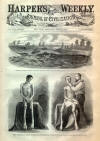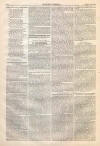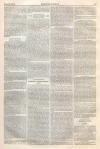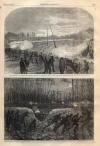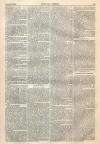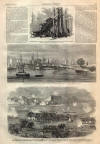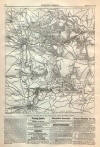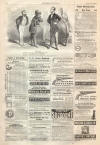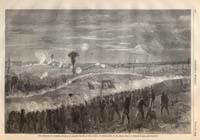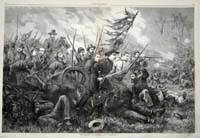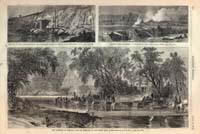Battle of Cold Harbor
|
|
This Site:
|
JUNE 18, 1864.] HARPER'S WEEKLY. 397 GRANT'S GREAT CAMPAIGN.ON page 396 we give a series of sketches illustrating recent events in General GRANT'S campaign. The principal sketch shows the Canvas Pontoons laid on the North Anna River for the passage of our troops. Another sketch represents the burning of the Fredericksburg and Richmond Railroad Bridge over the North Anna. A third sketch shows the Second Corps Batteries as they appeared in position on the banks of the North Anna, prior to GRANT'S flank movement and passage of the Pamunkey. The Battery which appears in our sketch is the Second Maine. On this page we give three additional illustrations of this campaign. The first is a sketch of a picturesque shelter erected by our soldiers, near the spot where General SEDGWICK was killed, as a protection against shot and shell from the rebel lines. The picture is full of interest as exhibiting what novel methods our soldiers resort to for purposes of defense from the casualties of battle. The next is a graphic sketch of the disembarkation of General W. F. SMITH'S Eighteenth Army Corps at White House, on the Pamunkey River, on the 30th ult. A correspondent thus describes the landing White House was reached at noon; but every facility for landing was found to have been completely destroyed. General BROOK'S flag-boat was run up to the ruins of what had been the wharf, and made fast. A detail was landed with difficulty, and was soon engaged in replanking the bridge with railroad ties. The railroad bridge, which had been crossed by SHERIDAN on his late raid, was found to have been completely destroyed by the rebels, and the Corps of Engineers were immediately at work upon it, as- THE CAMPAIGN IN VIRGINIA—A FIRE-PROOF IN THE WILDERNESS, ON THE SPOT OF GENERAL SEDGWICK'S SEDGWICK'S A SKETCH BY A. R. WAUD.]sisted by the One Hundred and Thirty-ninth New York. Three hours after our landing a great change was effected in the appearance of the place. It again became the White House of two years ago, with the scene of busy life and its innumerable bathers. The third is a spirited sketch of the FIGHT AT COLD HARBOR on the 1st instant, showing the position of General SMITH'S corps, which bore the brunt of the fight. General SMITH'S troops, though exhausted by a hard march and two or three days of hard labor, fought with the greatest gallantry. The rebels had a strong position on the edge of a dense woods, with rifle-pits and earth-works thrown up; but at the order Generals BROOK'S and DEVINS pushed through the woods on their front, and the exhausted men, suddenly imbued with enthusiasm, poured like a tornado to the charge, driving the rebels pell-mell from their works and through the woods. The rebels on our immediate front were of LONGSTREET'S corps, and were, after being driven through the woods, rallied behind their reserves, and led up to recapture their position. With their well known rebel battle cry they rushed forward, but were received with so close and murderous a fire of artillery and musketry that they broke and fled in confusion. Again and again they were rallied by their officers, and returned to the charge; but again and again they only returned to be again driven back with greater slaughter. Mr. WISNER, correspondent of the New York Times, in going from the front of BROOK'S division, had his horse shot under him during this engagement. General SMITH and his staff also had several narrow escapes, while some of his general officers, less fortunate, were seriously wounded by missiles from the enemy. DISEMBARKATION OF GENERAL SMITH'S TROOPS AT WHITE HOUSE-[FROM A SKETCH BY WILLIAM WARD.]1, 1. Rebel Guns.--2. Rebel Line of Battle.—3, 3. Rebel Earth-Works and Rifle Pits.--4. Devins's Division charging Rife-Pits, and capturing 580 Prisoners.—5. Brooks's Division.—6. Martindale's Division. THE CAMPAIGN IN VIRGINIA—FIGHT AT COLD HARBOR, JUNE 1, 1864-GENERAL SMITH'S CORPS IN ACTION.—[FROM A SKETCH BY WILLIAM WAUD.]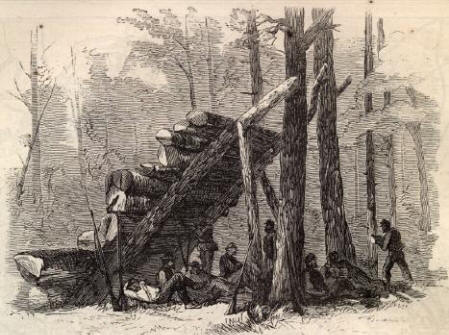 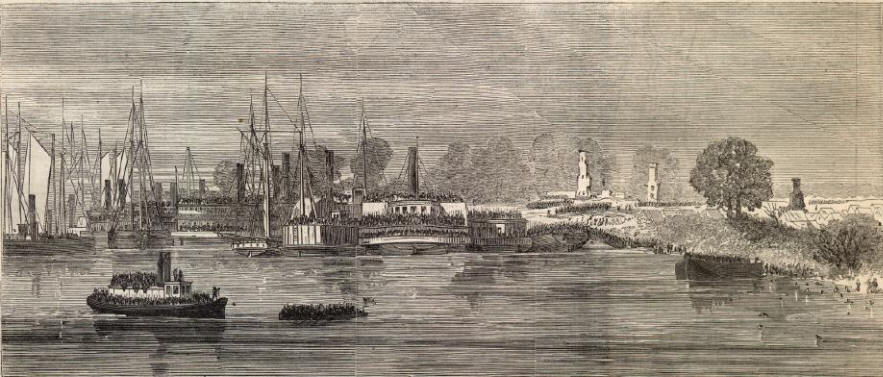 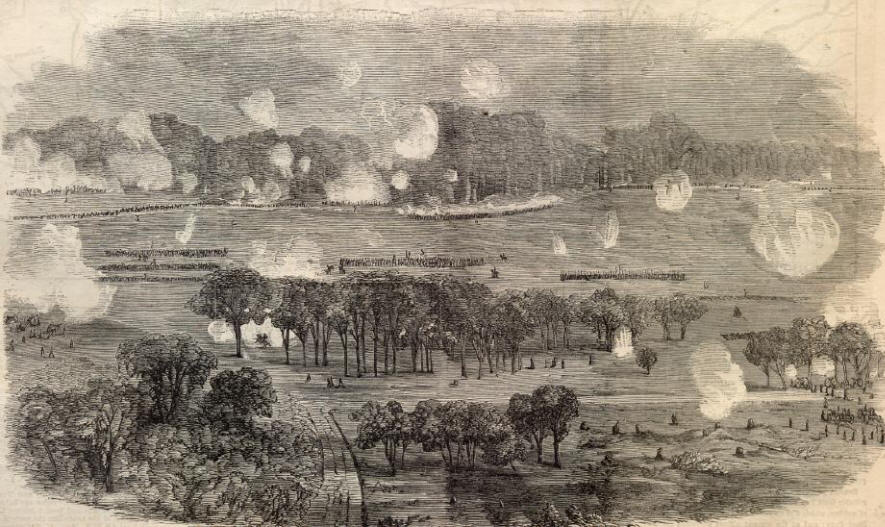 |
||||||||||||||||||||||
|
|
||
|
|
Site Copyright 2003-2018 Son of the South. For Questions or comments about this collection, contact paul@sonofthesouth.net |
|
|
Are you Scared and Confused? Read My Snake Story, a story of hope and encouragement, to help you face your fears. |
||
